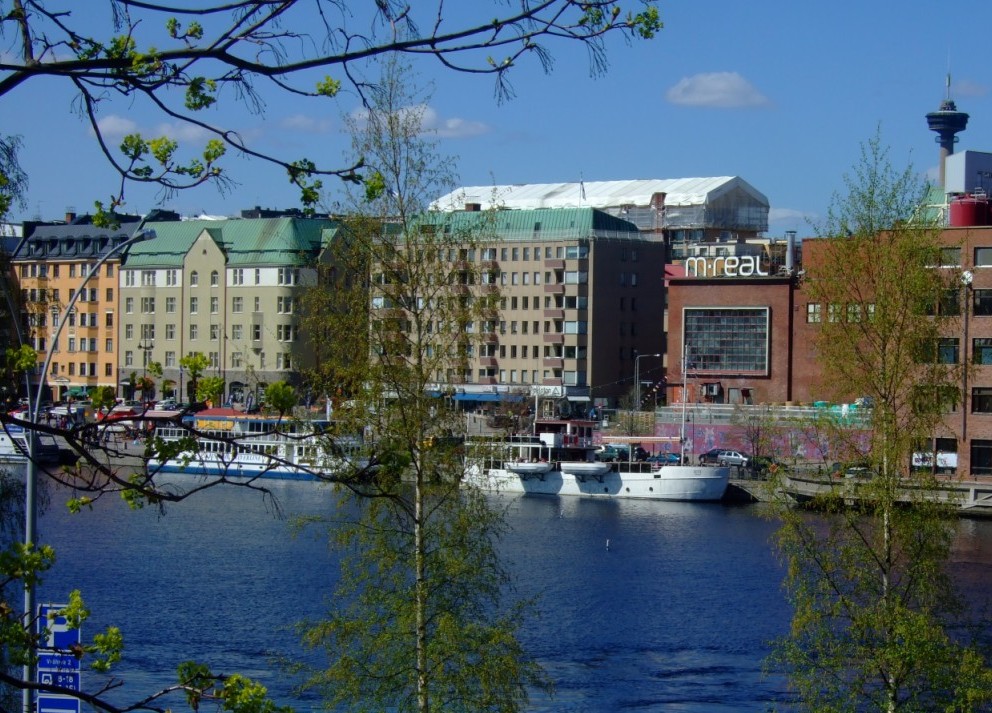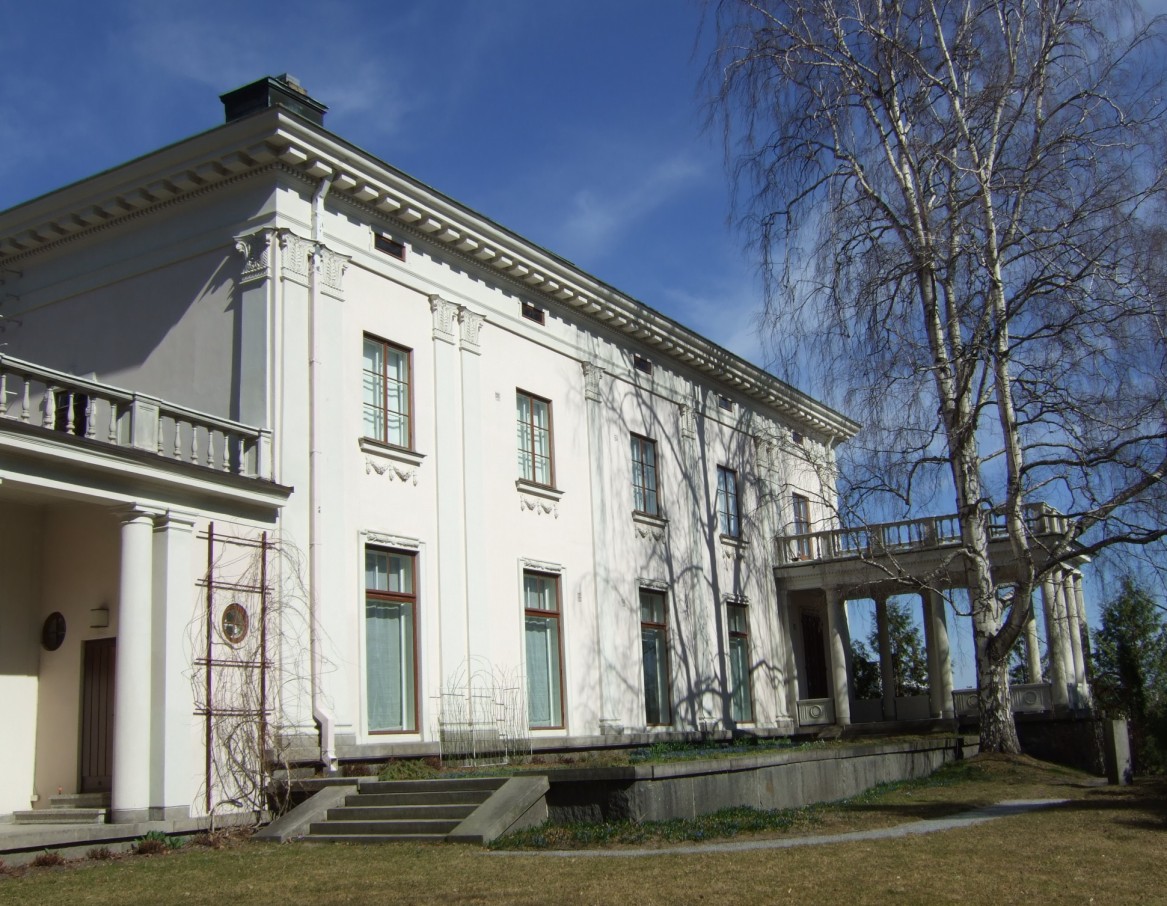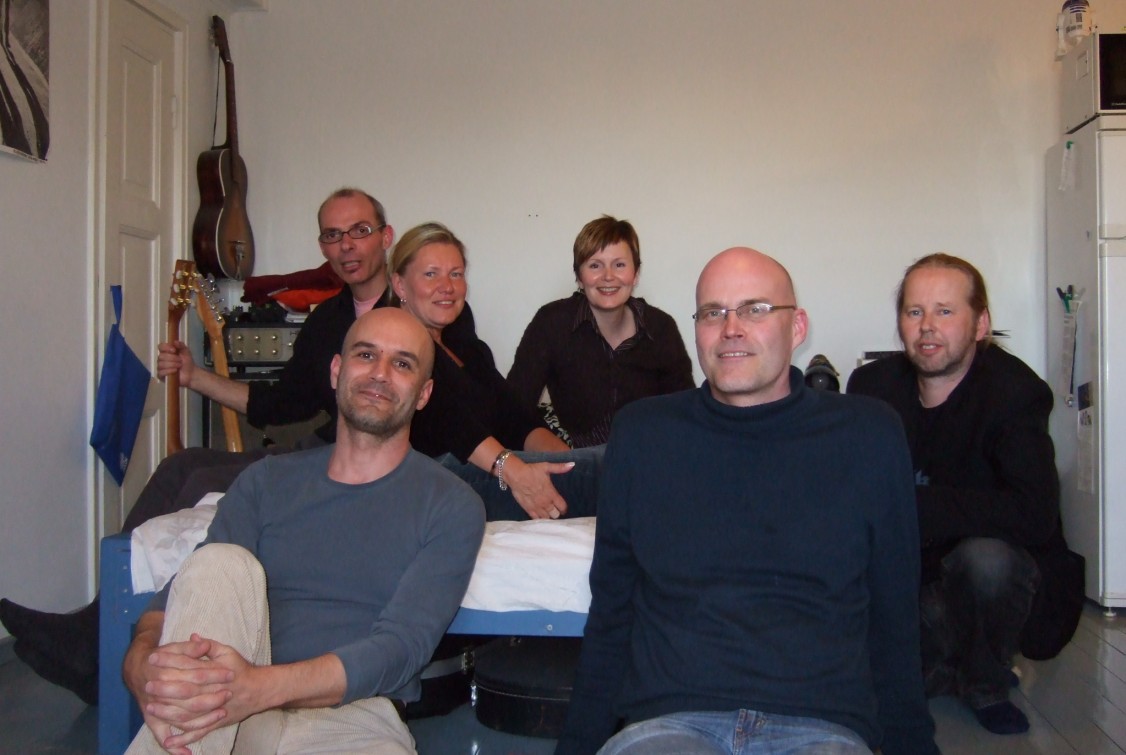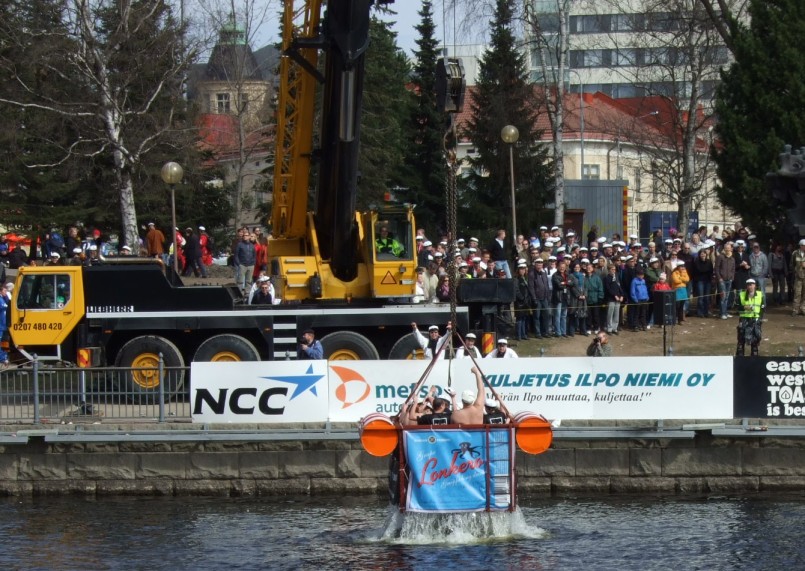My four days’ stay in Ranta-Hölli was like a short holiday that rendered a brand-new me, phisically and spiritually, as if I had been in a balneary. There I ran into a cyclist who was on a long trip riding a bycicle and hauling a small trailer with his luggage, tent and sleeping bag. It was my second day in Ranta-Hölli. I saw him walking down the slope to the lakeshore, where I was sunbathing after a short swim. The waters of Kirkköjarvi lake didn’t feel particularly inviting, slimy and murky as they were, rich with microorganisms in suspension and also algae, whose soft, pulpy caress makes me shiver with a repulsion I’ve never managed to overcome. After having settled in, he came for a session in the sauna cottage, which was right by the jetty where I lied. He introduced himself and offered me to join him, but I refused because the day was quite warm and the water felt like a soup. Still, once he lighted the stove with some wood, we talked for a while as he waited for the room to be properly heated.
He was an interesting and curious fellow who worked as a customs policeman in one of Finland’s maritime borders, namely in Turku. As we chatted, he told me some facts about himself and his job, about drug traffic, smuggling and illegal immigration; he complained that his placement was quite boring, as most of the ships came from civilized Europe and had therefore passed previous filters. The only ferries needing some watch were those coming from Russia, who was to say; namely the line Saint Petersburg-Turku.
As I enjoyed his conversation and he seemed to like my company, I took a second plunge in the water while he took his first sauna “round”; then we kept talking. By the way, time had flown during our chat and the sauna got overheated, so he came out all red as a crab, so stifled he couldn’t even profit from the dip, lake being–as said– too warm for any cooling effect. I was then glad I didn’t join him: you can’t possibly enjoy sauna wihout having at hand some really efficient way of cooling down your body between rounds.
So the evening went by. Later on, and also the following days, I walked the track to Sahalahti–the village four kilometres away–for having dinner or grabbing a beer in one of the two restaurant bars in town, which made for a nice stroll, some exercise and a good meal, meeting some people by the way, as otherwise the B&B was too lonely, just some chance traveller plus the cyclist and me.
He had had in mind to leave early in the morning two days after his arrival. There was a long leg ahead of him and he wanted to make the most of the dawn, pedalling when it was coldest, but when I awoke in the morning he was still there. There was a flat tyre and no way inflating it. For a while I tried to lend a hand, until I found out there wasn’t anything wrong with the pump–as we first thought–but the valve was broken. And noone had a spare. Though, these Finns are calm people, so he didn’t seem in the least worried, as if trusting God would provide. And somehow He did, because eventually our host disinterestedly managed to find him a chauffeur to Kangasala, about fifteen kilometres away, where he could buy a new tube and repair the bike. When he finally left us, it was the midday sun, so hot that I pitied him. Yet, what can scare a man in his thirties? There’s no strait a vigorous body and mind can’t fight.
The next day I left for Tampere, which was less than one hour away. I had felt so comfortable in Ranta-Hölli–it was such a peaceful place and nice host–that when bading them farewell I felt I’d see them again some day; maybe one of these winters, the best season for sauna. Talking about cold weather: I was shocked to learn that the heating bill during winter in Ranta-Hölli was up to montly eight hundred euros! But then, that’s quite natural, ’cause no matter how well insulated those wooden buildings are, there’s a lot of room to be heated, and Finnish winters are something, despite global warming having noticeably weakened this climate’s harshness.
Around one decade ago I spent one unforgettable year in Tampere, and since then I always like to come back. It was here that I learned to know Finland and its people. Indeed I had good teachers of life. Ilkka provided me with an appartment in the most majestic building in town, Pyynikinlinna (Pyyniki castle), formerly residential palace-house of Emil Aaltosen, the most important industrialist in the city by early XXth century, one of those self-made men, of an unbreakable faith in his destiny and unquenchable enterprising energy; that kind of rare people who make something in life and believe in their own work, though he’s now pushing up the daisies, like eventually all of us will. He started as a shoemaker and, after founding the largest shoe factory in the country, he ended up producing locomotives; quite a jump up. He was that kind of man which–I don’t know why–I can’t imagine lacking a strong religious faith.
I had met Ilkka during a trip I took to Japan, and from this budding relationship he would invite me to Tampere many months later, a city whose name I had never heard before. A somewhat eccentric, sceptic and clever young man, he played the guitar in a local band and made a living out of environmental projects in foreign countries, otherwise he worked for the Emil Aaltosen museun in Pyynikinlinna or enjoyed some scholarship or other. Even today, I still don’t know whether or not he believes in his own speciality, which he seems to take seriously every other day and make fun of the rest of the time.
Another one of my “tutors” in Finland was Pascal, a Frenchman naturalized Finnish, a nature lover, trekking guide and professional seducer. To him I owe having taken an unforgettable trip to Inari, in Lapland, a place he used to depict as wrapped up in some magic, and indeed it was magical to me, some day I’ll tell how. Then was Jussi, whose father had been working in Emil Aaltosen’s factories, when the entrepreneur was still alive. Typical phlegmatic Finn, Jussi owned one of the few wooden houses lasting in the very city centre, plus a modest kitchen-furnishing business in the outskirts, which he eventually got rid of as it didn’t yield any profit. How did he make a living since? Hang me if I know, and hang me if I’ve ever seen him worried about anything at all, bad humoured or missing his everlasting smile. We often painted the town red togegher and had great fun until he finally got a girlfriend and eventually settled down in the countryside, where he built a do-it-yourself house of great quality. A man in a thousand is this Jussi, a good fellow, affable, nice company and great friend to his friends.
However, my teacher and full mate along that time was undoubtedly Reijo Seppanen, a true character in my life. Among other things, he taught me all you need to know about sauna. I still recall the day when he popped in my appartment and, under the door’s frame, invited me to the sauna in the basement of the castle, as we used to call the museum Emil Aaltosen’s residence had been turned into, where we lived. By then I was totally new to sauna and somehow I was obscurely afraid I wouldn’t endure the heat; on the other hand, in those times I was quite self assured, so I went for it. The experience turned out to be so enjoyable that I became a fan; not in the castle’s facilities, which were quite restricted (actually I never used them ever again), but in the very popular Rauhaniemien Kansankylpylä, a busy public sauna by Näsijärvi lake, not too far from downtown, where Reijo and me used to go once or twice a week.
There I learnt to train willpower and tame the panic, to properly pour water on the burning stones, then get ready for the recurring heat waves thus arosen, which travel and bounce along the room’s ceiling; or to breath without burning one’s nostrils, to take several rounds and intermediate cooling dips, to endure the bite of icy waters in the heart of winter, when the frozen lake surface threatens every day to swallow the hole in the ice, a few degrees below zero. I also learned about the ad hoc sauna beer, barely alcoholic, for replacing some of the water our body loses through perspiration, which amounts to over one litre. I also found out you can feel hot even on trunks under a heavy snowfall, and that, after a good session, legs feel so light and relaxed you’d think you’re stepping on an air matress rather than hard ground.
Sometimes I was invited to someone’s private sauna, which was a bit different experience, because often they cook sausages here–wrapped in tin foil and placed onto the scorching hot stones–while taking the session, and also pour beer on the stones, which makes for a great smell inside the room; then–when we’re done with our hot & cold rounds–we feast on the sausages, drinking and eating, as sauna strongly whets one’s appetite.
But Reijo also taught me a bunch of other things about Finnish habits, like national dish being pizza (a joke of his) or some other, real cooking specialities like for instance musta makkara, a type of blood sausage they eat with cranberry jam, or the many ways to season smoked salmon. Also we went ice-fishing together on the lake, which you achieve by making a hole in the ice with the help of a special grill, being careful not step on the thin ice, which he taught me how to spot. I also learnt about ale pubi, cheap beer pubs, or how to correctly read Finnish aloud, despite I didn’t understand but a few useful words, mostly greetings and numbers I’ve now forgotten; and also about the funny way how the to-be graduates are “baptised”: they first get inside a floorless giant nest which is afterwards dipped into the lake hanging from a crane (see the picture); and so on so forth.
However, neither Reijo nor any of my other friends taught me something I had to learn by myself, stumbling many times before I finally understood that, more often than not, Finnish women don’t commit, ’cause they value their freedom very dearly; and that’s why it’s often easier for a man to get a one-night stand than a lasting girlfriend–even if only for a fortnight.
All those things, and many other I don’t recall now, I had learnt one decade ago in the company of these friends; and since then I like to come back and pay them a visit, learn about their present lives and go out for a sauna session or a few drinks.
Thus I’ve spent, this trip, a few days in Tampere. Now is time to get on the motorcycle and continue this journey to nowhere; but not before noting, as this is the first time I come here with my own vehicle, the ultimate teaching: there’s not a spot downtown Tampere where to park free of charge, and policemen don’t give bikers their share, like in so many other countries: I’ve got a ticket for parking Rosaura on the sidewalk. I wonder, though, how are they thinking they’ll collect it, as I haven’t thought of paying…





